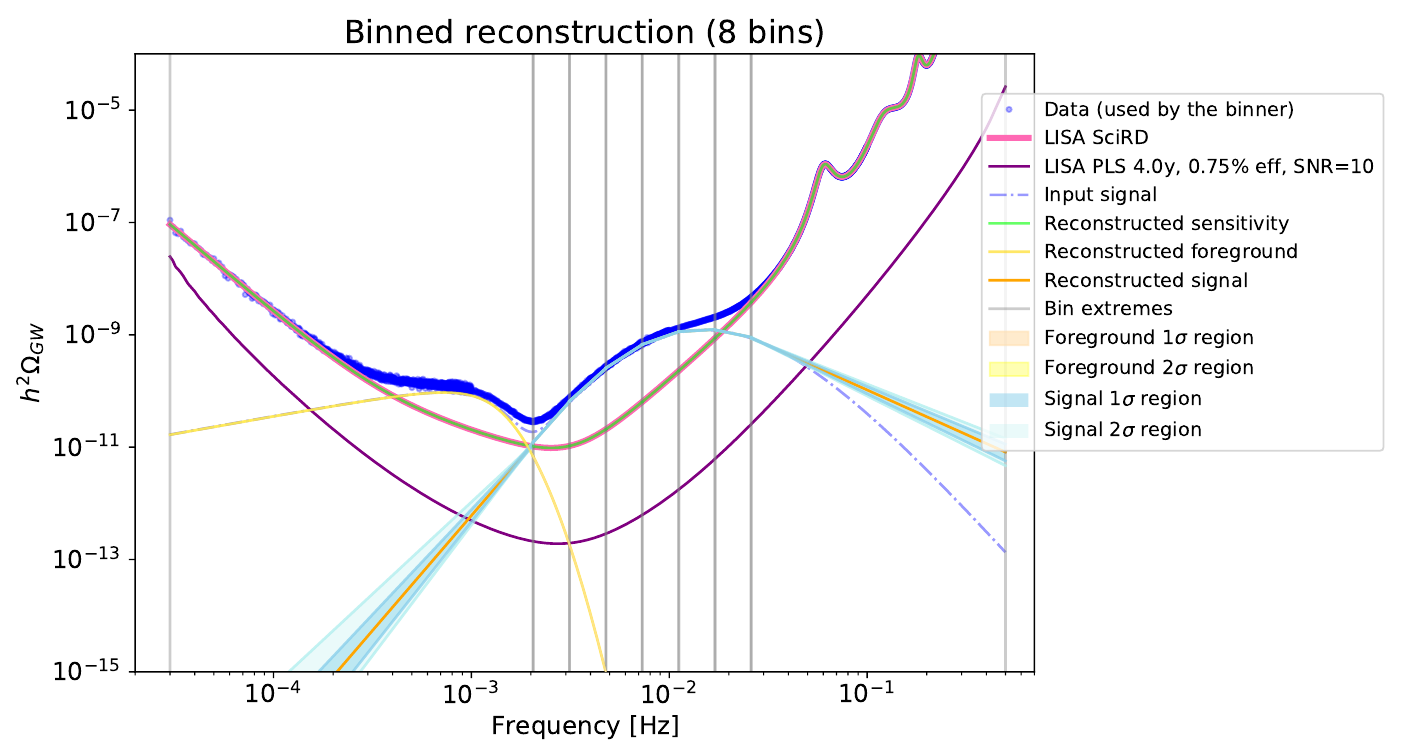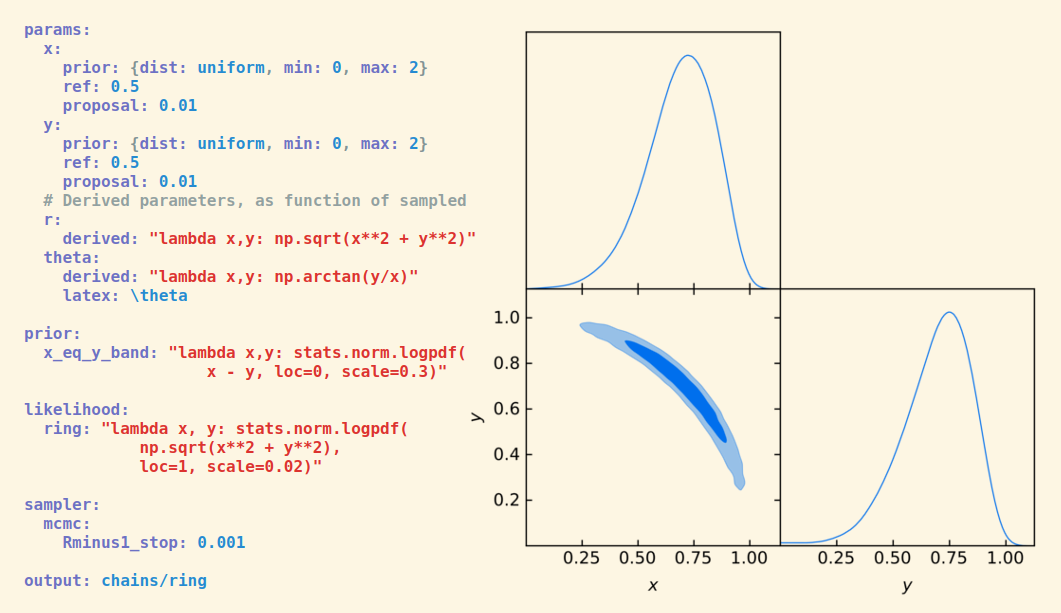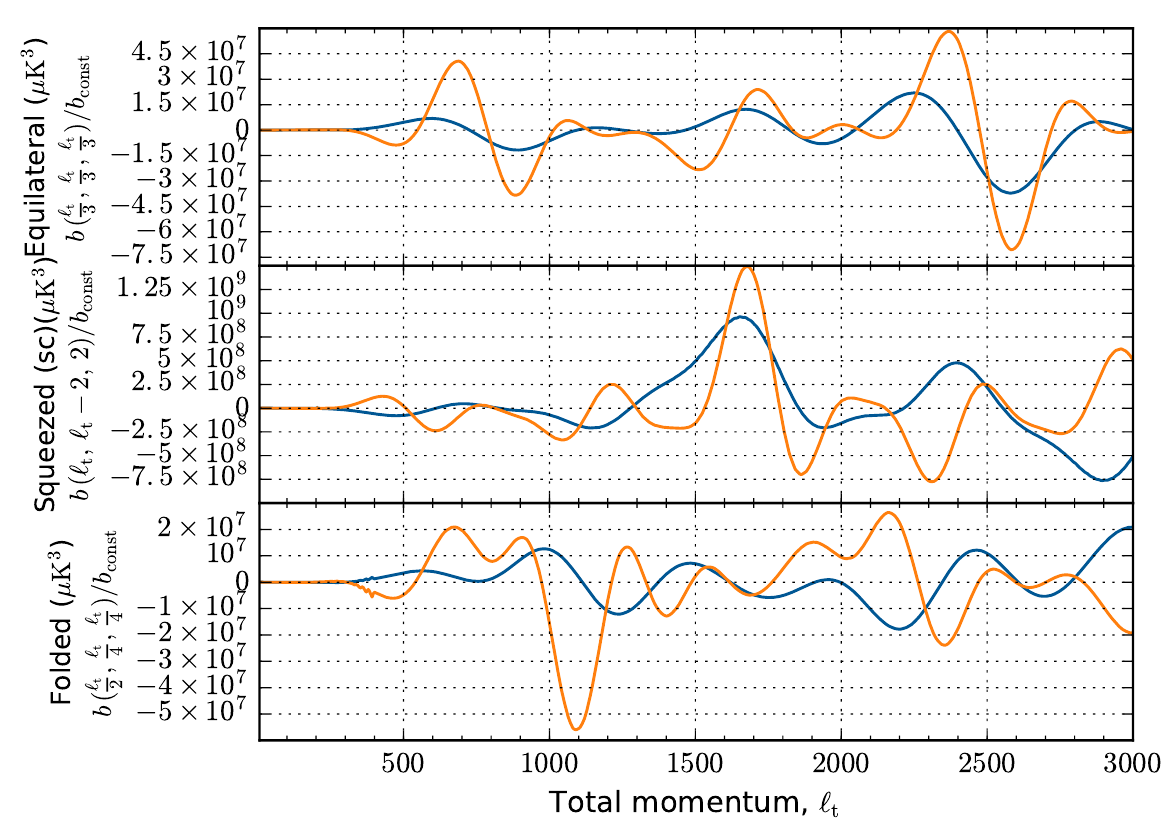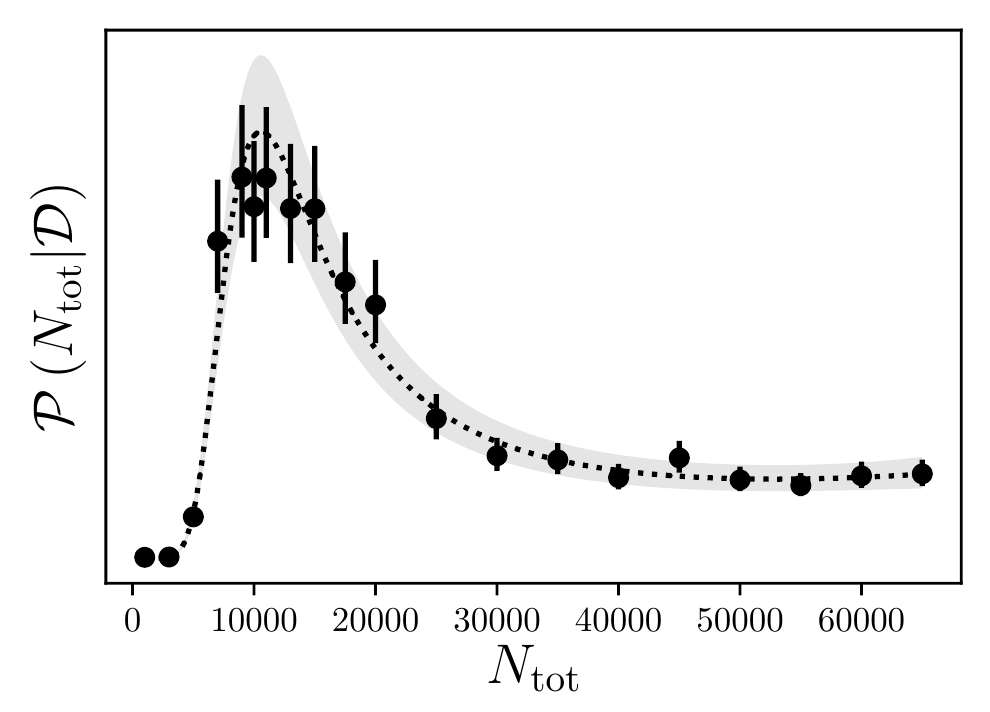My name is Jesús Torrado and I work on Cosmology, Gravitational Waves and general Bayesian Inference methods. At the moment I am a Ramón y Cajal tenure-track fellow at the Institute for the Structure of Matter of the Spanish Research Council (CSIC).
In the field of Cosmology, I am currently focusing on extracting a cosmological signal from the Stochastic Gravitational Wave Background, which also involves a good characterisation of the astrophysical foregrounds.
Regarding Bayesian Inference, I work on making existing algorithms more efficient (Cobaya), and on developing machine-learning-powered approaches to make computationally prohibitive problems possible, without compromising the statistical modelling of the data.
You can read below a more technical description of my current scientific interests, as well as my list of publications.
- Tenure-track Fellow — IEM–CSIC (ES) — Group: Gravitation and Cosmology
- Postdoc — U. Padua and INFN-InDark (IT) — Group: Nicola Bartolo
- Postdoc — ULB (BE) — Group: Sébastien Clesse
- Postdoc — RWTH Aachen (DE) — Group: Julien Lesgourgues
- Postdoc — University of Sussex (UK) — Group: Antony Lewis
- Postdoc — University of Edinburgh (UK) — Group: Andrew Liddle
- Ph.D. — University of Leiden (NL) — Group: Ana Achúcarro
-
Licenciado (equiv. M.Sc.) — University of Salamanca (ES)
Started at University of Extremadura (ES)
The detection of a stochastic background of gravitational waves (SGWB) can reveal details about the dynamics of the Early Universe: from features of the inflationary model to phase transitions. To exploit such potential, one must reconstruct the SGWB spectrum using a model-independent aproach, while disentangling it from astrophysical foregrounds. As an active member of the LISA Consortium, I am part of that effort.
I have developed, in partnership with other LISA CosWG members, a template-free SGWB reconstruction pipeline exploiting the full LISA interferometry data, named SGWBinner (arXiv:2009.11845). I am improving the current approach to make its parameter-free modelling more flexible, and it's Bayesian pipeline more robust. The SGWBinner is actively being used as part of the LISA Cosmology Working Package efforts, including forecasts for detection of anisotropies in the SGWB (arXiv:2201.08782) and of primordial signals (3 papers in preparation studying templates from inflation, first order phase transitions, and cosmic strings).

I am also producing, in partnership with other LISA CosWG members, robust LISA forecasts for populations of stellar-mass black hole binaries, based on the population studies by LIGO-Virgo-KAGRA (LVK). We have studied the probability distribution for the confusion SGWB due to unresolved sources and forecasted LISA's capabilities to detect it (arXiv:2304.06368), and are currently preparing a similar study of the expected LISA-resolvable inspiraling events (Q3 2023).
I am starting working on similar problems in the context of the Einstein Telescope, where I am also joining efforts to exploit LSS\(\times\)GW cross-correlations using ET-resolved extragalactic sources.
In collaboration with Antony Lewis, I have developed and continue expanding Cobaya (arXiv:2005.05290), a next-generation cosmological sampler written in Python, with a focus on:
- Rapid prototyping: Cobaya interfaces stock versions of cosmological codes and likelihoods where available; no additional tweaking is needed to plug modified versions of these codes (e.g. CAMB/CLASS).
- Integration of novel data likelihoods: Cobaya likelihoods are easy-to-write generic Python functions and classes. They can retrieve cosmological observables in a Boltzmann code-independent way, so that e.g. CLASS and CAMB can be swapped at no cost.
- Automatic exploitation of the structure of the pipeline: Cobaya does automatically (1) blocking of parameters according to which parts of the pipeline need to be recomputed when they change, (2) auto-caching of intermediate results (e.g. theoretical computations), (3) measurement of the speeds of each of the pipeline stages, and (4) uses all that information to sort parameters optimally so that cycling over them takes the least amount of time possible.
- Modularity and interoperability: By providing wrappers with a simple API to compute posterior values and intermediate quantities, Cobaya models can be easily integrated into alternative inference pipelines, e.g. machine-learning-based.
Cobaya is already one of the leading Bayesian MC frameworks in Cosmology: it has almost two hundred citations, and more than one hundred support requests on GitHub (and many more via email and CosmoCoffee). Cobaya is used internally by several experimental collaborations (Euclid, DES, LISA, Simons Observatory), and we have got expressions of interest from others.
At the moment, I work on extensions to Cobaya to improve the efficiency of our MCMC algorithm, improve HPC containerisation support, and implement new statistical inference techniques.

Slow pipelines are becoming an inescapable problem for upcoming astrophysical and cosmological surveys, due to the ever-growing amount of data gathered (larger summary statistics, costlier likelihood evaluations), and the increasing precision of these data (which demands a refinement in the calculation of the observables, increasing computational costs on the theoretical model side).
I develop machine-learning-based Bayesian inference algorithms that reduce the necessary amount of posterior evaluations by hundreds of times, aimed at problems in which the computational cost of evaluating the likelihood is too large for traditional Monte Carlo techniques.
My collaborators and I have recently released GPry (arXiv:2211.02045), a machine-learning Bayesian inference code, based on Gaussian Processes. GPry produces robust convergence for general (non-Gaussian) posteriors with dimensionality \(N\lesssim 20\), at 1/100th of the computational cost of traditional Monte Carlo, enabling inference on previously intractable problems at moderate dimensionality (\(d\lesssim20\)).

I have further developed this approach by devising a more robust and highly-parallelisable active sampling algorithm, able to deal with multimodal posteriors (arXiv:2305.19267).
We are currently applying this method to a number of astrophysical and cosmological problems, and I am working on improving its dimensionality scaling and other aspects of the algorithm.
Although Planck data so far favour a canonical single-field scenario, hints of features of different kinds are present both in the power spectrum and bispectrum. Those hints are not statistically significant by themselves, but if a simple-enough model can produce them both simultaneously, their combined significance may amount to a detection of early universe physics beyond the standard scenario.
[See: arXiv:1611.10350, arXiv:1311.2552, arXiv:1404.7522, arXiv:1410.4804]

In addition to features, a more precise determination of the scale dependence of primordial scalar perturbations and a detection of primordial tensor modes and non-gaussianity can also reveal the presence of extra degrees of freedom during inflation, in particular that of spectator fields, among which are curvatons. We have proven that using the stochastic formalism to compute the expected distribution of spectator fluctuations, we can tie precise measurements of inflationary observables with the duration of inflation under particular models.
[See: arXiv:1712.05364, arXiv:1701.06473]
